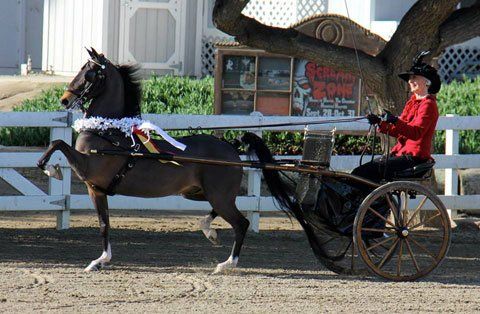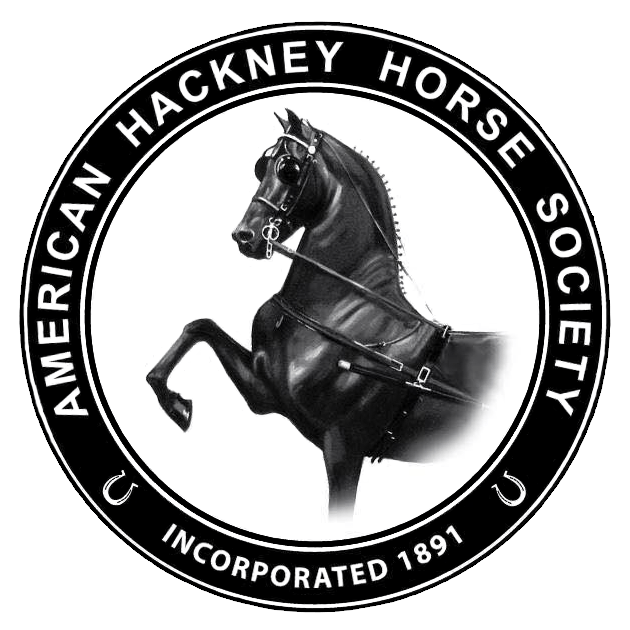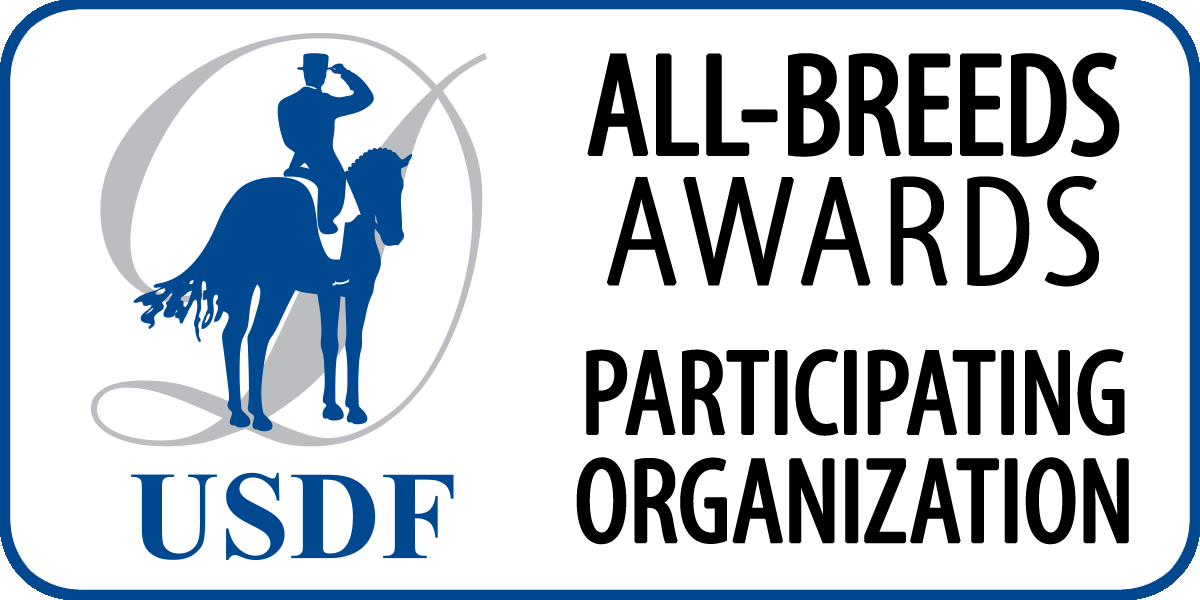MEET THE HACKNEY
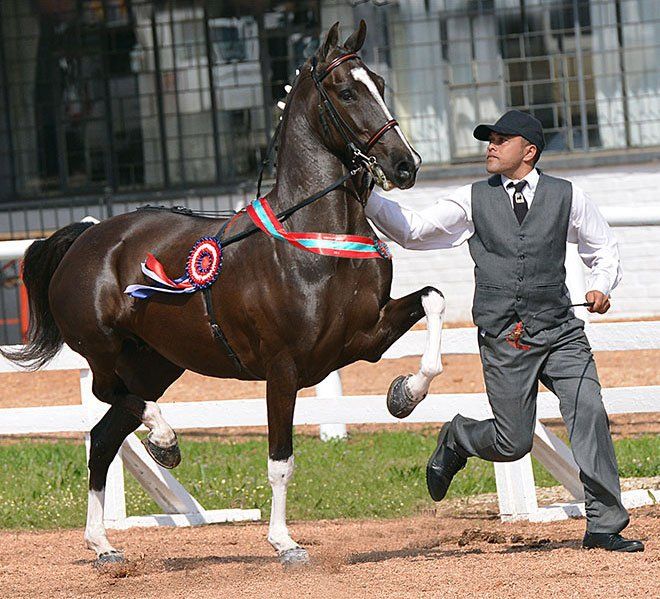
There is Nothing Like a Hackney
The first sight of a Hackney has always engendered a cry of “What is that?” The crisp action of the trot, knees raised high at each step, hind quarters powerfully propelling, amazes the first-time Hackney viewer.
Hackney horses are magnificent as carriage animals, but in past years have been on the endangered species list for horse breeds. Now, with the growing interest in carriage driving, Hackney horses are being sought out for their glamour and presence as singles, pairs, and fours. Admired for their versatility, their numbers are increasing. American broodmare bands are once again in production.

Hackney ponies, a smaller, power-packed version of the Hackney horse, have been prized as show ponies and childhood companions. They are a good value, for they are easy to keep, stay sound and healthy into old age, have delightful personalities, and possess lovable characteristics. They may be trained to ride or drive and love to be petted, groomed, and handled. A Hackney pony can be a best friend whether you are young or old.
HISTORY OF THE HACKNEY
Origins of the Hackney Breed
The origins of the Hackney as we know it began in Norfolk, England, where the horses called Norfolk Trotters had been selectively bred for elegant style and speed. Seeking to improve on both accounts, breeders mated the Norfolk mares to grandsons of the foundation sires of the Thoroughbred. The first Hackney as we know the breed today is said to be The Shale’s Horse, foaled in 1760. During the next 50 years, the Hackney was developed as a special breed. The seas were being crossed regularly during the 1800s, by ships bearing both Hackney horses and the smaller ponies which certain breeders were selectively encouraging. Vast improvements in British roadways in the mid-1800s also contributed to the development of the swift trotting horse. These roads did not always demand heavy dray animals which tug carts from deep ruts. Now, a man could say “Trot On” and really go!
The breeding of Hackneys in England was formalized in the founding of the Hackney Stud Book Society in 1883. This was the Golden Age of Driving, when automobiles were not even a dream. The Hackney was the ultimate driving machine of the 1880s, both in America and Britain. The first Hackney pony imported to America was 239 Stella, brought to Philadelphia by Mr. A.J. Cassatt in 1878. In 1891, Mr. Cassatt and other Hackney enthusiasts founded the American Hackney Horse Society, an organization and registry which thrives today. From 1890 until The Great Depression, wealthy Americans brought boatload after boatload of horses and ponies of the most noted strains.
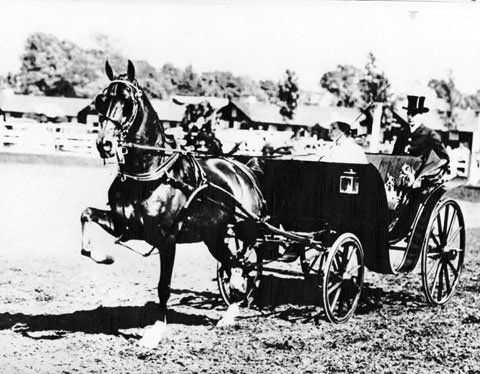
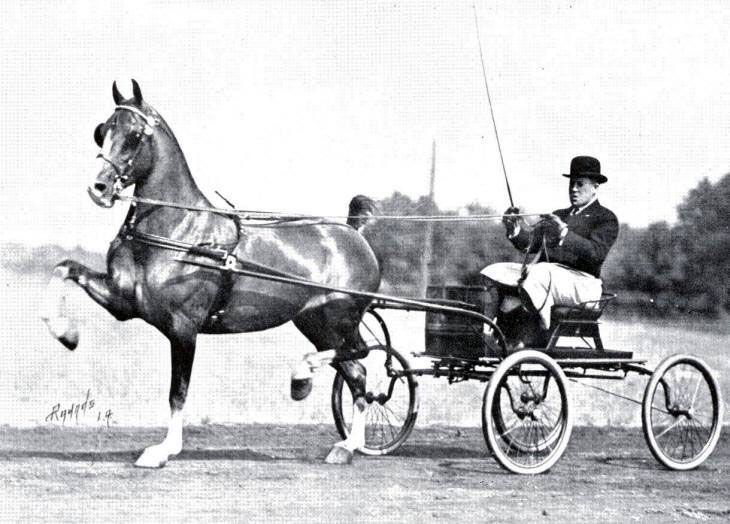
The Hackney Today
The modern Hackney is colored black, brown, bay and chestnut in the minority, with or without strip and white stockings. He should possess a small head, muzzle and ears, giving the general impression of alertness. The neck should be long and blend into a broad chest and powerful shoulders. A compact body with a level back and round rib, a short strong loin and level croup with either a long or docked tail carried high are desired. The legs should be of medium length, the joints large and of strong quality. The thighs and quarters are well muscled. Pasterns are of good length and slope. The Hackney has a good foot and the breed, both the horse and pony, has a good reputation for soundness.
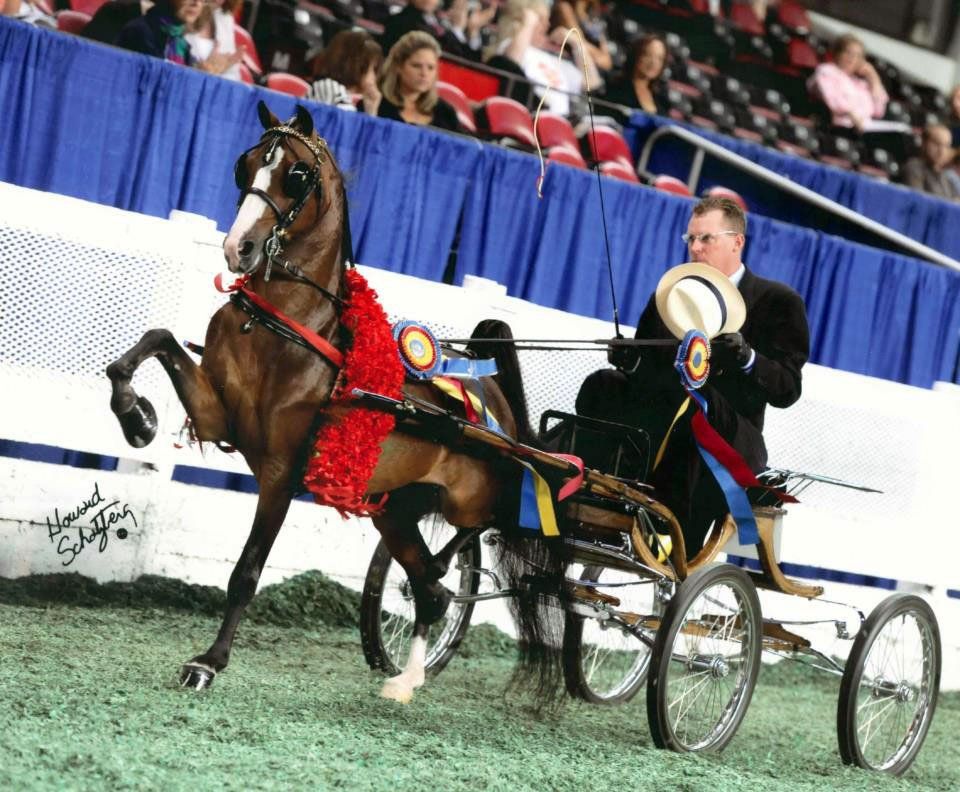
The action of the Hackney, his hallmark, is spectacular and highly distinctive. Shoulder action is fluid and free with a very high, ground covering knee action. Action of the hind legs is similar but to a lesser degree. The hocks should be brought under the body and raised high. All joints should exhibit extreme flexion. The action must be straight and true. The whole effect must be arresting and startling, showing extreme brilliance.
The remarkable high stepping gait of the Hackney is exciting to watch. Hackney ponies are shown in four divisions,:the Hackney Pony; Harness Pony (Long Tail); Roadster Pony; and Pleasure Pony. The Hackney Horse can be shown single, pair, four in hand, obstacle, and some are shown under saddle.
THE HACKNEY HORSE
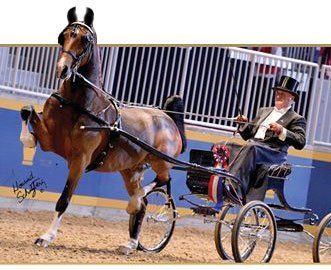
Hackneys standing over 14.2 hands are classified as Hackney Horses. Shown in a variety of ways, the Hackney Horse is a versatile performer.
Hackney Horses are often driven in both Carriage and Combined Driving Events as singles, pairs, tandems, unicorns and four-in-hand. In the sport horse disciplines, today’s Hackney Horses are competing in Hunter/Jumper, Dressage, Combine Training (Eventing), English Pleasure, and Competitive Trail Riding/Driving.
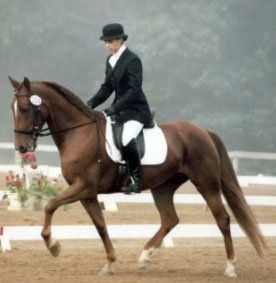
Many owners are once again competing in Carriage Driving and Coaching with their Hackney Horses and each of them is very successful. There is nothing more elegant than a Hackney Horse put to an antique carriage or coach! It is not an easy task to beat one in the new American Driving Society Park Division. Why drive another breed when you can have the Rolls Royce of carriage driving?
In 2003, The American Hackney Horse Society created the Open Competition Awards Program to acknowledge and recognize those Hackneys who were competing against other breeds.
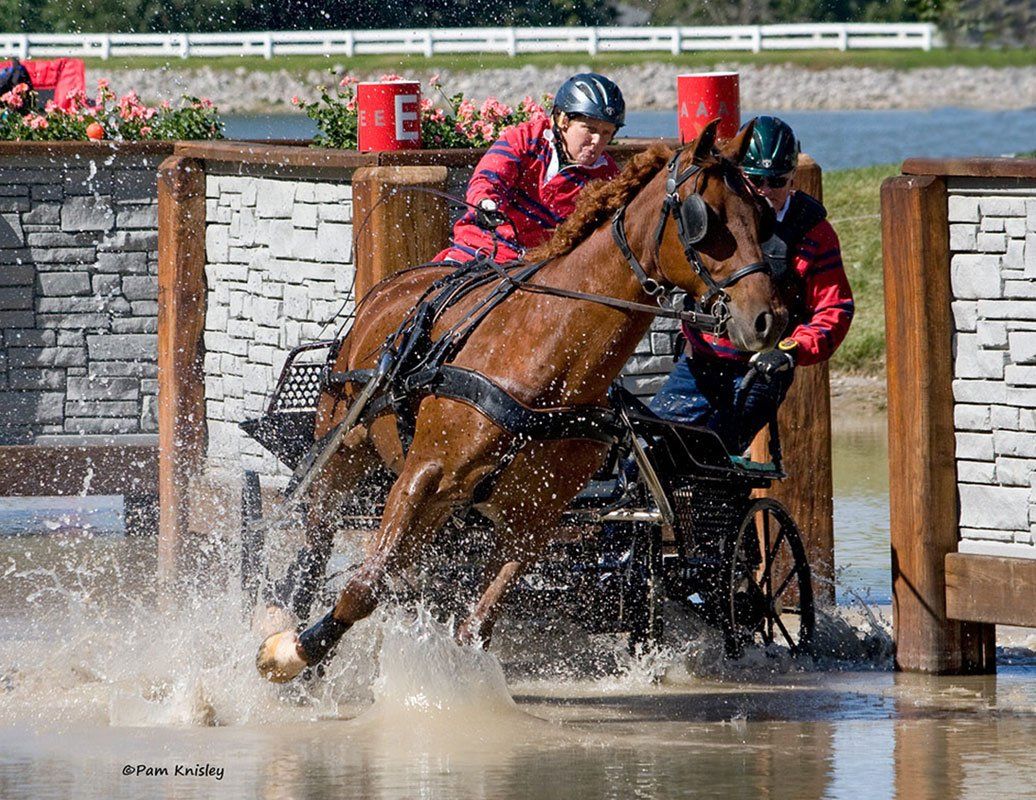
More Hackneys are competing in Dressage! They are making their mark in both the USA and UK. As of 2004, the Hackney was added to the United States Dressage Federation annual All-Breeds Awards.
Hackney Horses have again returned to the Jumping Division in both the USA and UK. Their incredible power and scope surprises those who have never seen this breed before. The Hackney Horse is also no stranger to the show ring. Several shows offer Hackney Horse classes. They can be shown as a single or pair in the show ring as well as In-Hand.
THE HACKNEY PONY
Hackneys standing under 14.2 hands, or 58 inches at their withers, are considered Hackney ponies. These smaller Hackneys are primarily featured in the show ring. There are five main divisions that ponies show in, with differences being in their size, show ring performance, and mane and tail appearance. Each type is dynamic and exciting to watch in the show ring.
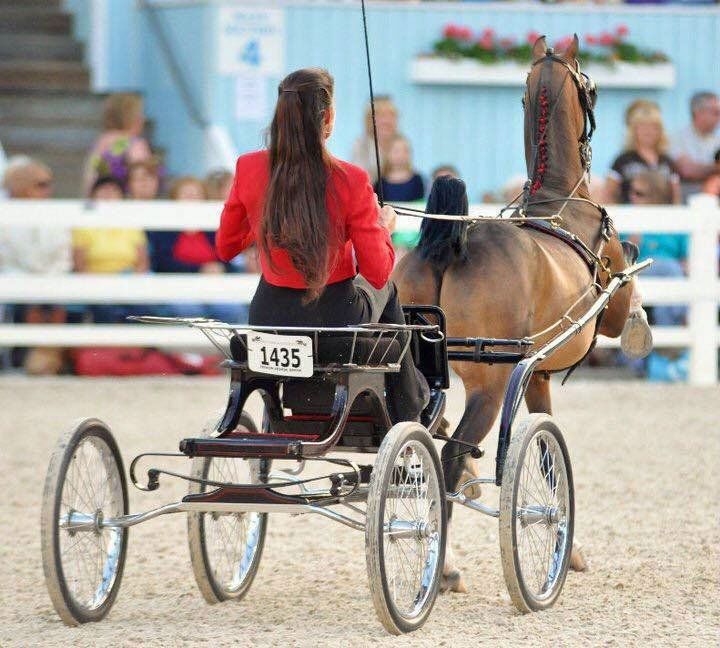
The Hackney Pony
This dynamic high stepper must stand 14.2 hands and under at the withers. These ponies must be shown with the appearance of a shortened tail and with a braided mane. Ponies are to be shown to a four-wheeled vehicle called a viceroy; they are also shown in pairs.
Classes offered in this very competitive division include Open and Amateur, including Ladies, Gentlemen, or Junior Exhibitor.
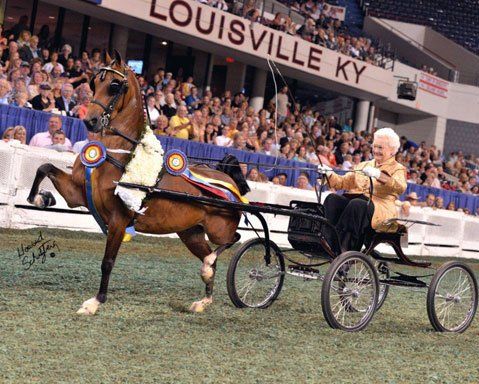
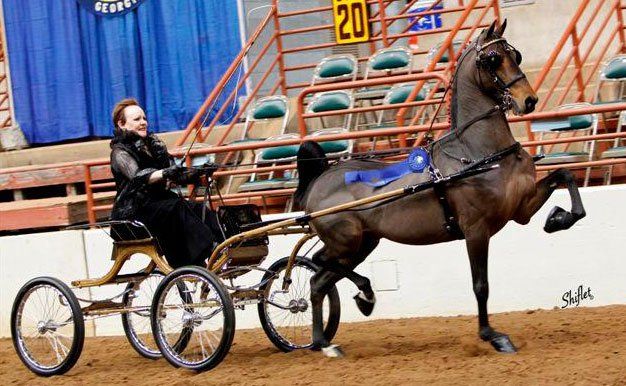
The Roadster Pony
This very popular and speedy Hackney measures 13 hands (52 inches) or under and shows at three separate trotting speeds: the jog, the road gait, and at speed. The Hackney Roadster ponies are the speedsters of the Hackney breed. They are shown to a two-wheeled road bike with their drivers wearing racing silks. There are three divisions for the roadsters, the Open, Amateur, and Junior Exhibitor.
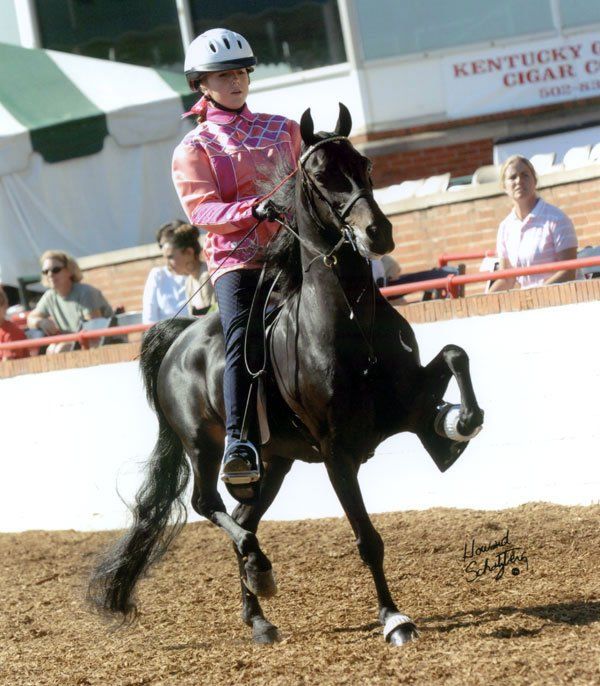
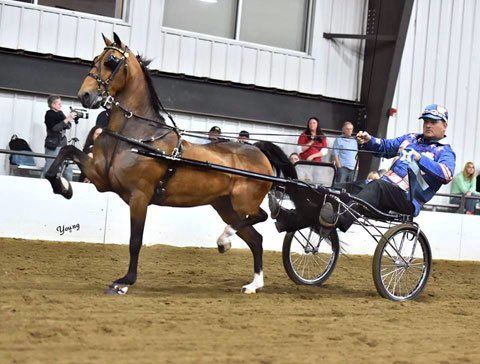
Roadsters are shown at the jog-trot, road gait and then at “speed.” They are also shown under saddle by Junior Exhibitors wearing racing silks. A new division, Roadster Pony To Wagon, has the road pony hitched to a miniature doctor's buggy.
The Harness Pony
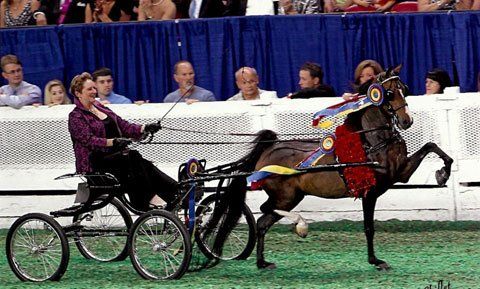
Also called the Long Tail, this dynamic high-stepper stands 12.2 hands or under at the withers.
The Hackney Harness Pony must be shown with a long mane and an undocked tail. Ponies are to be shown to a four-wheeled vehicle called a viceroy; they are also shown in pairs.
Classes offered in this very competitive division include Open and Amateur, including Ladies, Gentlemen or Junior Exhibitor.
The In-Hand Pony

The "In Hand" classes are primarily for weanlings, yearlings and 2-year-olds. Exhibitors compete by lining their pony up to be judged on conformation, then leading it along the rail to be evaluated on performance.
This is an excellent division for newcomers to try due to the limited amount of equipment needed and the relative ease of training a hand pony.
Most hand classes are part of futurity competitions where thousands of dollars in prize money are available to top finishers.
The Pleasure Pony
Showing in the newest of the four Hackney pony divisions, the Pleasure Pony is 14.2 hands or under, and is well mannered and a pleasure to drive.
Another class for the Hackney is the Pleasure Driving Division. These ponies are shown with unbraided manes and tails to an appropriate pleasure vehicle. They are shown only by Amateurs – Ladies,
Gentlemen or Junior Exhibitors. They are shown at a pleasure trot, road trot, and a flat walk. They must stand quietly in the line-up and back when asked. They are to be quiet, easy, and a pure pleasure to drive.
Pleasure Ponies are also shown under saddle by junior exhibitor riders.

